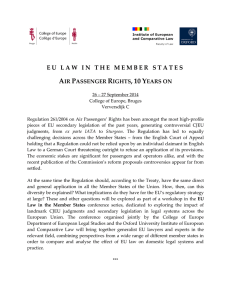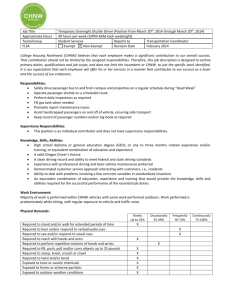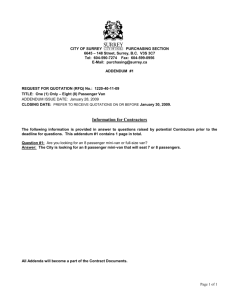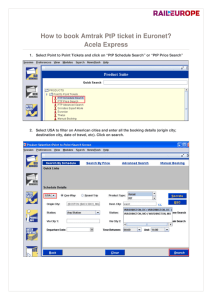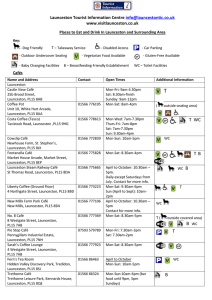Problem Identification Report (WORD 461KB)
advertisement
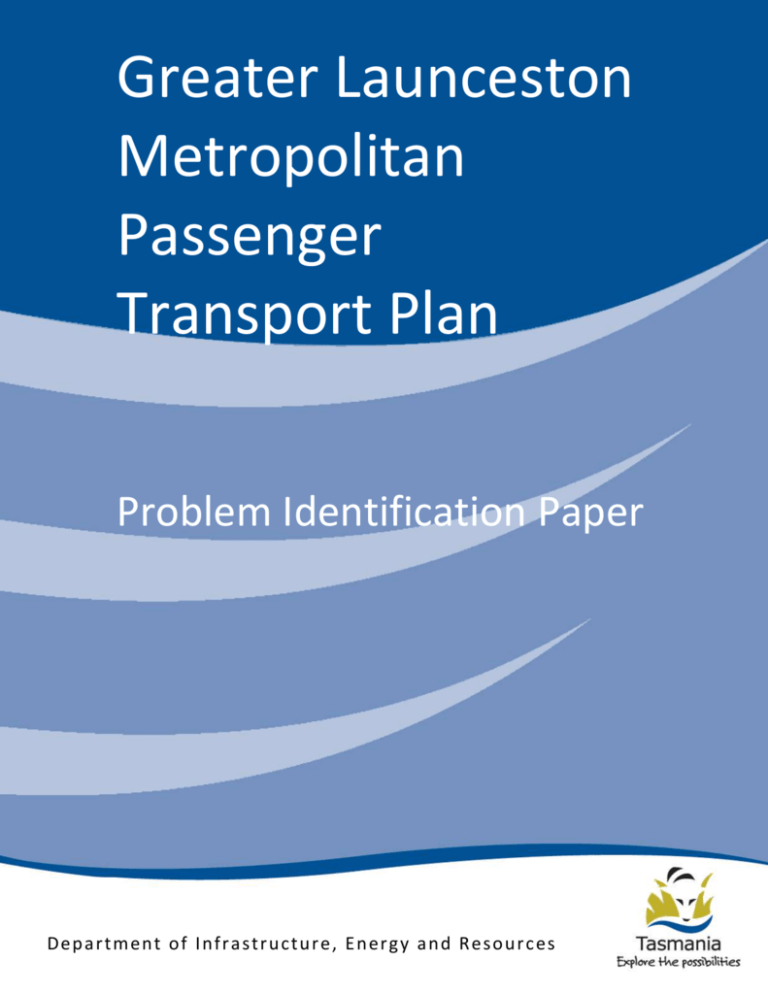
Greater Launceston Metropolitan Passenger Transport Plan Problem Identification Paper Dep a r tmen t o f I n fr a str u c tu r e, E n er g y a n d Reso u r c es Problem Identification Transport is an essential part of our daily lives, supporting access to jobs, schools, shops and key services and enabling our participation in social and recreational activities. In cities across Australia, settlement patterns and the way we meet our transport needs have developed in tandem with increasing car ownership and use. For Launceston, this has encouraged low density, dispersed development patterns – designed around car use – and low use of alternative transport modes. The result is an over-reliance on private cars for everyday trips. Private vehicles provide high levels of flexibility and will continue to be a dominant transport mode in the Greater Launceston metropolitan area and Tasmania in general. However, an over-reliance on cars generates problems that need to be addressed. The Tasmanian Urban Passenger Transport Framework (TUPTF) outlines the State Government’s approach to identifying and prioritising passenger transport problems in urban areas. It also provides the basis for developing solutions to those problems. Priority areas for action are: Encouraging the use of low carbon emission transport modes such as public transport, walking and cycling. Encouraging land use patterns that integrate with the passenger transport system to improve the attractiveness and effectiveness of public transport, walking and cycling options. Providing consistent travel times, in particular, the overall time of undertaking a journey (including waiting times), for all users of the transport system. Encouraging use of walking and cycling trips, either as part of a trip or for the total trip. Ensuring transport and land use planning systems are integrated and work together to support an attractive and effective passenger transport system. Key demographic characteristics, settlement patterns and travel patterns for the Greater Launceston metropolitan area have been identified through the Background Report. These elements have helped shape the current transport networks and behaviours and will influence the opportunities available to mitigate problems associated with high car-reliance. These characteristics include: Population growth in outer urban areas: Low levels of population density; An ageing population; Areas of social exclusion; and Low levels of physical activity. Global challenges that need to be considered in the context of problem identification and mitigation include: Transportation as a major contributor to greenhouse gas emissions; and Vulnerability to increases in oil prices. A problem identification process has been undertaken using the following inputs: Background Report – collated from a number of sources including the ABS, regional and local planning documents, local government strategies and plans; Stakeholder interviews – conducted with industry representatives and key interest group representatives; Input from Working Group Representatives – from DIER, local government and Metro Tasmania; and An Options Identification Workshop – with stakeholders representing councils, industry and key interest groups. Key problems are represented in the diagram below. Greater Launceston Metropolitan Passenger Transport Plan Passenger Transport Problems Differences in State and Local Negative perceptions Governments’ drivers, scope and goals of public transport as a Ambiguity about State and Local viable mode for daily trips Governments’ responsibilities for Subdivision design infrastructure hinders transport Negative perceptions of Short-term view for planning and development accessibility active transport as a viable decisions Some areas of transport mode for daily trips Land use development led by private sector – disadvantage not Road space is dominated by cars affects community/stakeholder perceptions of well-serviced by PT Discontinuous walking infrastructure transparency/consultation. Student-based demand, including Discontinuous cycling network Zoning codes have not encouraged higher students travelling out of area, Sections of cycling network do not always densities and mixed use creates substantial demand at follow direct route Subdivision design does not support peak times Public spaces are disconnected from each public and active transport modes Low frequency and slow travel other Headworks charges do not include times on public transport Lack of funding for identified infrastructure gaps Public and Active Transport Lack of integration between public, private and and dedicated direct routes Availability and low cost of community service providers Lack of End-Of-Trip facilities parking encourages Low fare revenues from low densities in outer Lack of information/encouragement/promotion of urban areas car use power assisted bicycles as a transport option Poor customer information about PT services Short hours of operation of bus services Lack of strategic direction on public transport network development Population growth in outer urban areas Low levels of population density Low levels of physical activity Areas of social exclusion An ageing population Car reliance Community resistance to change Periods of traffic congestion Perception of limited parking space during peak hours Greater Launceston Metropolitan Passenger Transport Plan Passenger Transport Policy Division Department of Infrastructure, Energy and Resources GPO Box 936, Hobart 7001 Ph: 1300 135 513

